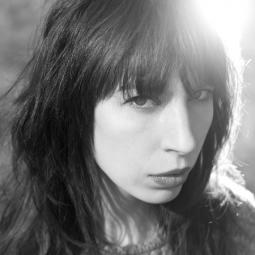Biography
Through my work I am exploring the perceptions and hierarchies regarding female methods in painting, crafts and ornament. By making large masculine canvases with sanding techniques and thick layers of crystals and tapestries, I aim to revalue tangible beauty in contemporary painting. These canvases symbolize the ever present interaction between dominant paradigms and marginal developments in art history. Whether it concerns the exile of the female body or the prevailing anti-crafts orthodoxy; centuries of art history in which manual and traditional techniques were rampant, have given way to an art climate where concepts predominate. The condescending attitude towards craftsmanship and man-hours were a grateful premise to once again rethink the autonomous value of an artwork. It’s fascinating how the prevailing anti-crafts orthodoxy exclusively allows artists to be ideas-men, rather than the skilled artisans that they were in the past. Inherent in this perception is the fact that over centuries manual techniques have acquired a symbolic value of being feminine, tactile and applied.
The work can be seen as part of a group of artists like Michael Raedecker, Joana Vasconcelos and Satoru Aoyama that are looking for a renewed significance and meaning of the physical presence of crafted materials. The raw canvases contain organic textures of embroidery, textiles and crystals combined with abstract and figurative techniques. Traits are endlessly sanded until parts of the canvas are completely lapsed. Traditional aesthetics take shape in physical layers of manually applied needlework and tapestries. Sections are adapted further, re-coated and frequently modified. By flipping ideas of feminine versus masculine and the low arts versus high arts, I am investigates the inscrutability of aesthetics in order to complement and transcend the endless medium of painting.






